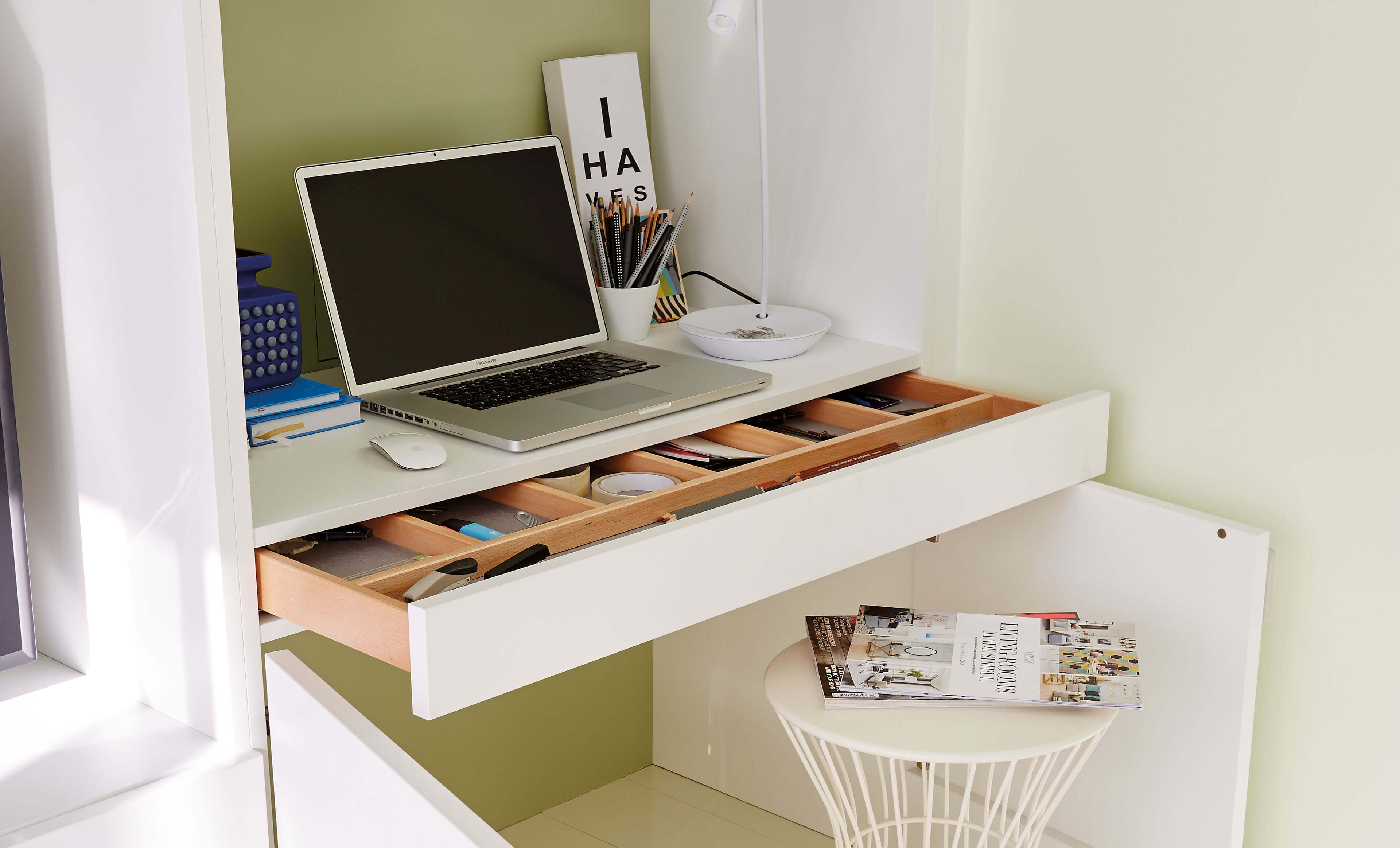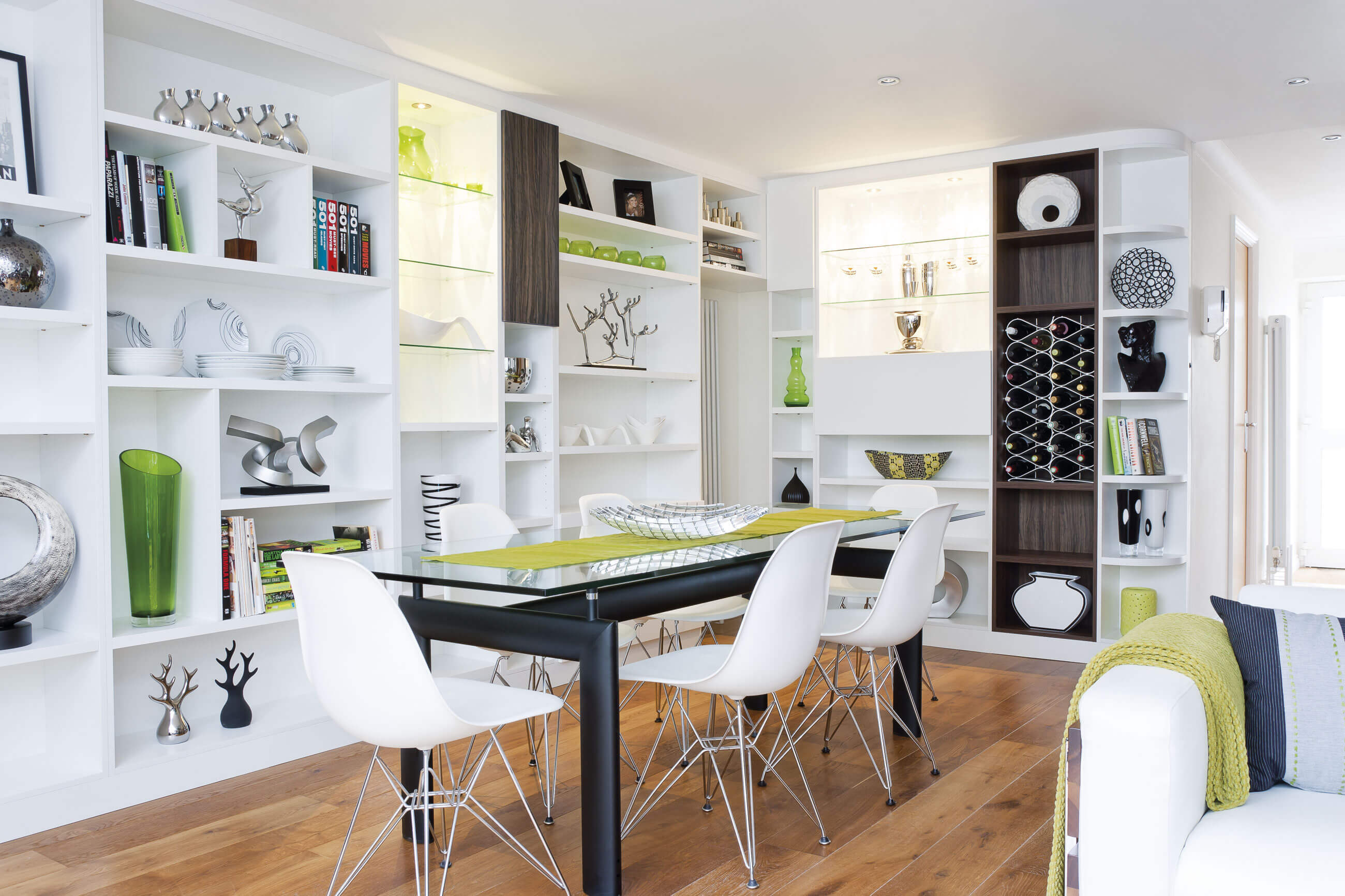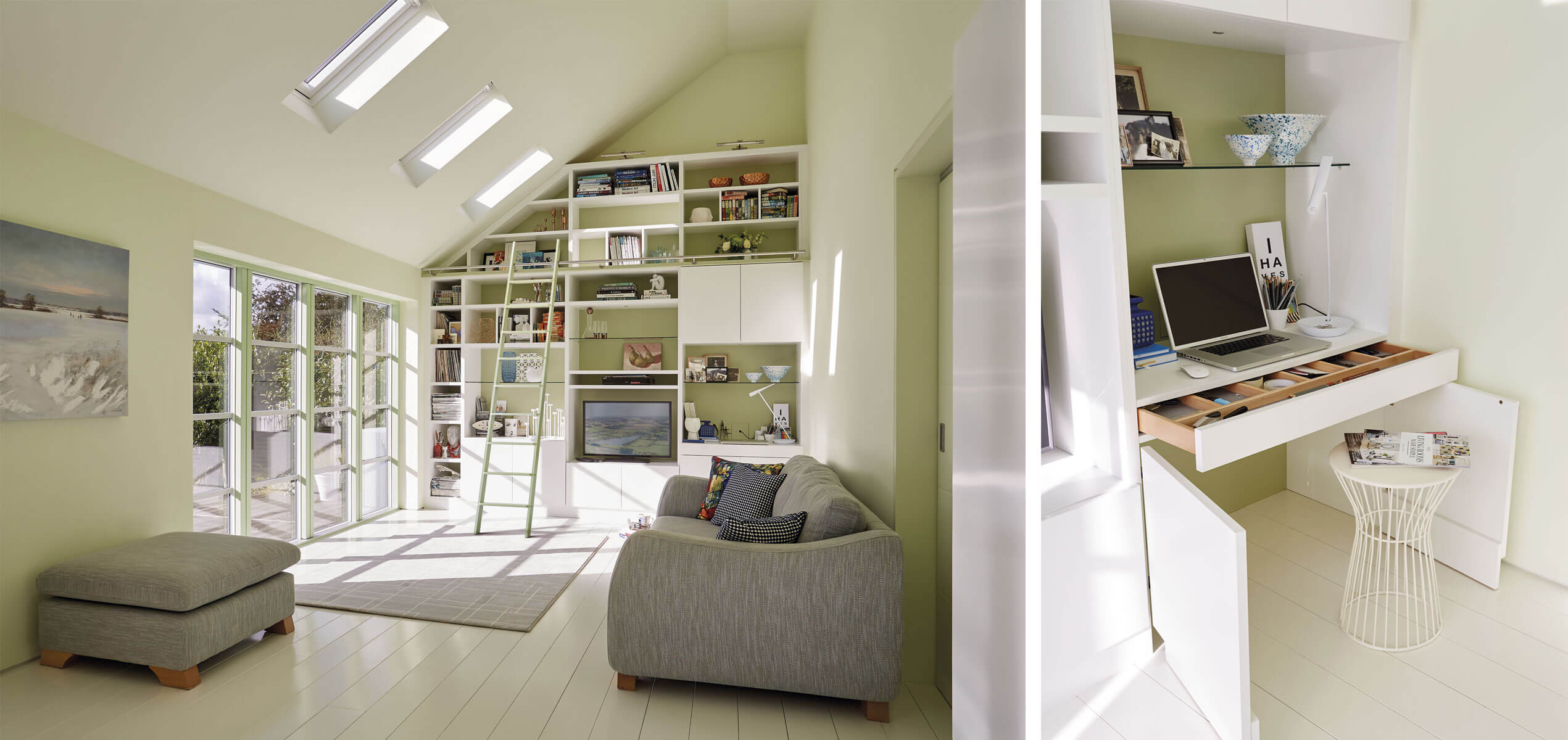
Compact Home Office Ideas – How to create a stylish and practical home office without a spare room
There’s no doubt that hybrid working is here to stay. With many of us...

The living room whether separate or open plan is a high traffic area, regularly used by you, your family and friends. This is why it’s one of the most important locations in the home to get right. It has to be comfortable, versatile and functional fitting in with your lifestyle and needs.
A living space is a haven for relaxation and a place to socialise with family and friends. Whether you’re looking at planning a new extension, indulging in a complete redecoration or simply restyling your living space for the new season we have some top tips for you to consider below.
When it comes to the initial planning stage, firstly think about function. How will you be using the space and are there any features you want to highlight? Your living room is usually a place to put up your feet, hang out with family and relax, this often means large practical furniture, TVs on display and standard storage. Although they are considered essential you don’t want these items to be the sole focus of attention.
Walk around your space and visualise where the largest pieces of furniture are going to sit. You need to make sure there is 3-4 feet of walking clearance around furniture so the room doesn’t feel too cramped and awkward to get around. A good way to start a floor plan is with paper templates of each of your key pieces with exact measurements. You can then play around and adjust without the hassle of moving furniture.
If your living room is solely for watching TV and relaxing, opt for a bespoke built in media unit that can hide unsightly wires, media boxes and your TV when not in use. Our Levigo sliding door system is perfect for this, creating much needed extra storage whilst hiding distracting technology.
Open-plan living is fast becoming popular within our homes. These spaces should be cleverly considered and designed around your specific family needs. Allocate and define areas with different functions, this may include a lounge, dining space and kitchen. If it’s solely an open-plan living space without kitchen, divide it into areas such as a cosy reading corner, clever integrated home study or formal seating where you can indulge in a glass of wine with friends.
You can define zones with rugs, statement furniture, lighting and even decorate with various colours to break up large walls. Don’t place all furniture against walls, by placing pieces in zones and centrally, it creates visual definition and depth within a space. Open plan layouts allow for more family interaction perfect for times when everyone is getting about their daily tasks in the same space.

If you don’t have a large area to work with there are many ways to amplify the sense of space. Taking the same strategy as open-plan, create zones. If you want a quiet space when the kids are watching TV, why not create a cosy reading corner with bespoke bookshelves and armchair, this way there’s a separate sanctuary away from the larger social seating area. Fireplace alcoves or awkward corners are great for built-in storage and shelving.
One of the most well-known techniques to create the illusion of space is to strategically place mirrors around the room. As well as being a trusty practical interior tool, generally used to check your appearance, mirrors are a great way to breathe new life into an enclosed space, enriching the aesthetic and adding depth and light.
Often if you have smaller rooms in your home, one solution can be to combine them by knocking through non-supporting walls. This also makes the most out of any natural light coming through windows and French doors. You may have bulky furniture to work with, be careful with diagonally placing pieces in corners of the room, this wastes essential space that can be used for storage or statement lighting.
It’s now standard for the living room to have many functions, so the types of lighting you include should complement them. Have a variety of fixtures for each designated zone, time of day and mood. Large pendant lights over a coffee table, or hung centrally can create a wonderful focal point, while stylish table or floor lamps can provide task and mood lighting. Warm bulbs produce a cosy relaxed feel as opposed to harsh fluorescent bulbs. Consider this when choosing your lighting.